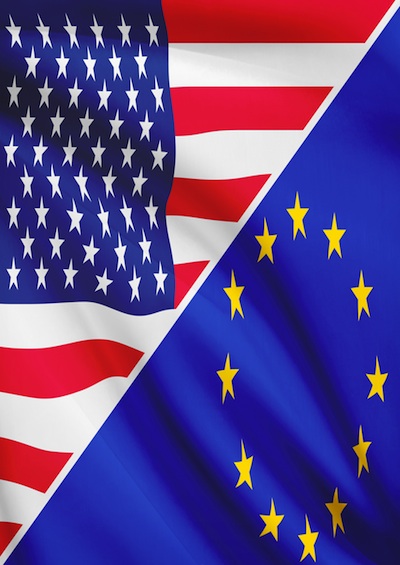TTIP: Transatlantic Blues?
The TTIP negotiators have lost their way. Time for a reset.
October 10, 2014

Trade negotiators from the United States and the European Union just met in Washington for the seventh round of negotiations on the Transatlantic Trade and Investment Partnership (TTIP).
I participated in the so-called Stakeholder Consultation that the two negotiating teams had arranged for — and came away with the sense that the negotiators have lost their way.
As somebody who has long been involved in and advocated for an intensifying transatlantic business relationship, I do not say this lightly. What are my principal reasons for this judgment?
Emphasis on jobs and growth is missing
During the preparatory phase of TTIP, when the leaders called for recommendations from the High Level Work Group on Jobs & Growth (2011-2012), the dominant focus was on how expanded trade and investment across the Atlantic would lead to economic expansion and job creation.
Economists inside and outside of government, whether in the United States or the EU, calculated the size and scope of the transatlantic market. They also looked at the deep integration across the Atlantic in manufacturing and services, linkages to global value chains, valuation of current tariff and non-tariff barriers, as well as the 15 million plus jobs connected to this trade.
The consensus was clear: The gains to overall economic growth and prosperity demanded that the two sides seize the opportunity to forge a “21st Century” trade partnership.
However, at last week’s public read-out session, the lead negotiators were far from any such dynamism. Instead, they paid mere lip-service to the economic rationale for TTIP.
The crucial emphasis on jobs and growth – the core rationale of the entire negotiating effort — was nowhere to be found in their remarks. Instead, the two sides seemed stuck in their inability to move beyond their talking points on the egregious barriers both have had in place for decades (Jones Act, French audio visual barriers, etc.)
Negotiating framework is outdated
When President Obama, EU Commission President Barroso and European Council President Van Rompuy agreed to begin trade talks in July they notably named the negotiations the “Transatlantic Trade and Investment Partnership” – not the “Transatlantic Trade and Investment Negotiation.”
Yet, both sides have approached the talks as though they were a traditional FTA negotiation, generally with a far weaker trading partner. As a result, both the Americans and the Europeans believe they could act as the demandeur and give up nothing of consequence to the other side.
Far from underlining a partnership of any kind, the negotiating dynamics have taken on an “us versus them,” or “I win, you lose” character.
Given such a frame of mind on both sides, it is not a surprise that the negotiators are stuck. They fail to see that the trade negotiating structure of the post World War II period — where reciprocal “concessions” had to be balanced within and across sectors — does not reflect the dynamism and complexity of today’s transatlantic economic relationship.
It is already a hyper-complex, tightly integrated $6 trillion trade and investment relationship, reflecting global value chains and advanced regulatory structures. Changing the mentality of the negotiators from a “win-lose” proposition to one of joint problem solving is the key challenge in front of us.
Do not lose sight of global benefits
It is understandable that trade negotiators caught in the intensity of the talks have become myopic and stuck. Yet, it is a huge failing for their political leaders not to keep their eye on the larger issue at hand – that of the implications of U.S.-EU Leadership on trade and investment.
The rest of the world is watching how the EU and United States address the challenges we face in our bilateral relationship. The outcome will have implications for how other countries behave in bilateral, regional and multilateral talks.
The incoming EU Trade Commissioner Cecilia Malmström has called for a “reset” in the negotiations. Her U.S. counterpart, Michael Froman, has indicated he agrees that both sides need to take a step back.
Indeed, based on the mood of the Stakeholder Consultation last week, all participants are disappointed in the process. This is reflected in the rare fact that there are calls from civil society for greater transparency and statements from business groups who are unsure where their recommendations stand.
A “Reset” is needed
We cannot expect a different outcome unless we change the negotiating dynamics and better define what will constitute a “successful” outcome.
Priority should also be given to joint problem-solving and to addressing market opportunities one side has identified in the other’s market (e.g., government procurement) and establishing a program of ongoing work that evolves as the transatlantic economy evolves. This will require a new way of thinking and working.
For now, the problem is that the structure for the negotiations is out of sync with the dynamism of the transatlantic market as well as the need for transparency. We must work together to reset the negotiations and emphasize, “It’s a Partnership, Stupid!”

